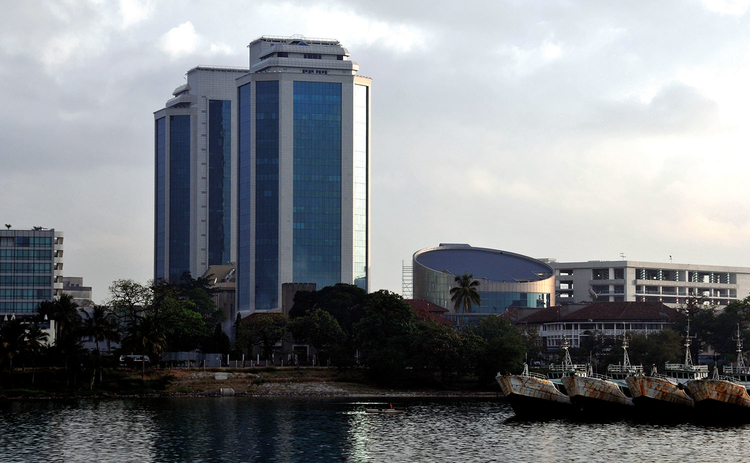Despite its long-lived identity, the dairy sub-sector in Tanzania is yet to unleash its potential towards the national GDP and actors involved in its value chain.
The dairy sector in Tanzania contributes only 1.5 per cent of the total GDP which is the least compared to other countries in East Africa, including Kenya and Uganda which have an average of six per cent contribution in their GDP from the dairy sector.
In Tanzania, dairy production is closely linked to cattle rearing, as the majority of the cattle raised in the country are used for milk production, meat, and other products such as hides and horns.
Tanzania has a large number of cattle compared to other African countries, with approximately 33.9 million according to the National Crop and Livestock Census.
However, the majority of these cattle are local breeds, which are known for their resistance to diseases and pests but have low milk production, with an average of fewer than 3.5 litres per day per cow.
This, coupled with the large population of cattle in the country, leads to low profitability and a limited amount of milk production at the local and national level, with an estimated three billion litres of milk produced per year, with a difference of 40 per cent between the dry and wet seasons which is largely contributed by the number of local breeds reared in the country.
Dairy production in Tanzania is divided into five regions: southern highlands, northern, coastal, central, and lake zones. The central and parts of the coastal zone have higher milk production due to a larger number of cattle reared.
READ MORE: Small-scale Traders Hit Hardest By Ongoing Water, Power Rationing in Tanzania
However, most dairy production is done by smallholder farmers rather than companies or estate farms. According to the National Crop Census, 47.1 per cent of households in Tanzania Mainland and Zanzibar own dairy cattle.
Despite this, dairy cattle production faces challenges such as poor rearing practices, low milk prices, lack of market, and lack of knowledge in value-added milk production.
High cost of management
One of the main concerns of dairy cattle farmers is the high cost of management which makes the venture unprofitable.
The average cost of rearing a cow from calving to gestation is around Sh1 to 2 million, meaning a farmer would need at least two cows (that produce an average of 10 litres per milking) to break even.
Additionally, the price of milk is low and does not exceed Sh1,200 in upcountry regions, and is rarely more than Sh900 if sold through associations or collection centres to milk processing plants.
Exceptions are for Zanzibar and Dar es Salaam where farmers sell milk at around Sh2,000 but this price is spiked by the management costs encountered. Tanzania like elsewhere in the world has currently observed the highest rate of inflation in recent years.
READ MORE: Agribusiness in Tanzania: A Solution to Youth Unemployment
As it stands, the inflation rate is estimated to be at 4.8 as of December 2022 which is a decline from 4.9 in the previous quarter. Since most of the concentrates are obtained from food crops, it is most likely that the sector is also impacted.
As a result, dairy cattle rearing might remain a subsistence-based business with minimal profit making unless the farmer opts to sell the live animal.
The dairy sector in Tanzania has seen slow growth, if not stagnation, since independence.
Since the post-independence days, the sub-sector had always been under the jurisdiction of the Ministry of Agriculture, Livestock and Fisheries until 2017 when the ministry was disintegrated into two forming two different ministries, a decision that was put in action by the late John Pombe Magufuli.
Currently, the sector falls under the Ministry of Livestock and Fisheries, which is responsible for the overall management and development of livestock.
Under the Ministry of Livestock and Fisheries, there is the Tanzania Dairy Board, which works to ensure the overall performance of the sector by regulating, promoting, developing and coordinating the dairy sector.
The board is responsible for licensing dairy enterprises involved in dairy value addition, such as factories, farmers’ associations, AMCOs, and Small and Medium Dairy Enterprises, among other regulatory enterprises.
Tanzania has around five milk processing companies such as ASAS, Kilimanjaro Fresh, Dar Fesh, and Kahama Milk, while Azam and Njombe milk factories seem to have fallen out of business.
Unfriendly working environment
One major challenge for these major business entities in the dairy sector is the unfriendly working environment as a result of regulations and policies developed targeting the dairy sector.
These regulations make it difficult for these major, small and medium business entities to work in harmony with milk producers.
READ MORE: Over 400 EU Companies to Take Part In the EU-Tanzania Business Forum
Another major setback is the number of authorities they report to, which includes the Revenue Authority (TRA), the Ministry, the Dairy Board, OSHA, Municipal, TBS, and at times regional political leaders.
Additionally, regulations involved in the exportation of milk produced affect these entities. Milk produced in the country is mostly consumed locally, and if it has to be exported, a set of procedures must be followed.
It is uncertain if there are milk producers exporting milk to other countries, as it is known that the Tanzania Mainland milk producers couldn’t even transport milk to Zanzibar to meet the Azam Dairy milk demand which was an opportunity for milk farmers from both the island and Mainland.
One economic advantage that makes Uganda and Kenya benefit from the milk they produce results from the milk trades these two countries have amongst themselves.
This can be an opportunity for Tanzania considering that Tanzania is a member of the portentous East African block but also has ratified the African Continental Free Trade Area (AfCFTA).
Both the government and private sectors are working to address the challenges facing the livestock sector, particularly the dairy sector.
The government has increased the number of extensions and veterinary doctors to educate farmers on profitable and sustainable dairy farming practices and has implemented improved breeding methods, such as Artificial Insemination, to improve local breeds.
READ MORE: Here is Why Small-Scale Miners are the Future of Tanzania’s Mining Sector
Additionally, the government is working to strengthen milk-producing associations through training and support.
The private sector has also intervened in the dairy sector, particularly in areas with favourable environments for exotic dairy breeds.
Organizations such as SNV, Heifer International, Land O’lakes, ANSAF, AMDT, and SAGCOT are partnering with government entities to support dairy smallholder farmers and improve linkage, value addition, and dairy business management to make the dairy sector more profitable.
More efforts are needed
However, more efforts are needed. Increasing milk consumption is crucial for improving the dairy sector in Tanzania.
READ: What Does Formalisation of Artisanal and Small-scale Mining Sector Look Like?
Compared to other East African countries Tanzania’s milk consumption rate is estimated to be as low as 45 litres per year, which is 20 per cent of the recommended amount by the WHO and FAO.
This low consumption can be attributed to a lack of promotion of locally produced products but also a lack of knowledge on the nutrition benefits associated with milk consumption.
More efforts should be made to establish common health and safety standards for the dairy sector to guide the exportation of milk within the East African region and further.
This can be done by adopting similar mechanisms used in the meat industry that is currently performing well.
By expanding the milk market beyond local jurisdictions, farmers will be motivated to improve their breeds for increased productivity thus benefiting not only dairy farmers but also the government, as it will increase its tax base and revenue.
Additionally, there is a need for the government to direct further budgetary allocations to the Ministry of Livestock and Fisheries as it has been seen to the Ministry of Agriculture.
Additionally, it is important to consider harmonizing the relevant authorities for the sector.
Harmonizing the relevant authorities for the sector and setting favourable milk prices for farmers as it has been observed for other agricultural products such as coffee, should also be considered.
READ MORE: Tanzanian Founders Are Hesitant to Go Public After Raising Fund. Here’s Why I Find This Conflicting
Additionally, educating farmers on better dairy farming practices, including environmentally friendly practices.
An example of practices that can be employed involves collective dairy cattle rearing employed in Zanzibar where farmers collectively rear their cows in one area, unlike in Tanzania Mainland.
Lastly, efforts should be made to support women and youth in the dairy sector. It is evident that more women are involved in dairy farming compared to men and youth.
Thus, being the case improving the dairy sector would be improving women’s and youth welfare in general.
Conclusively, the dairy sector can be another sector that contributes extensively to the economy of this great nation but as for now, it is a sleeping giant.
Gibson Mulokozi is an agronomist and trained project manager with over four years of experience in social research, monitoring & evaluation and marketing. He is available at Ggmulokozi@outlook.com. These are the writer’s own opinions and do not necessarily reflect the viewpoints of The Chanzo Initiative. Do you want to publish in this space? Contact our editors at editor@thechanzo.com for further inquiries.





2 responses
was excited on your opinion. was leaning from your summer.
my friend Gibson, I have dream and passion to invested in Milk Sector at Mwanza Tanzania.
please My friend Gibson Was interested to learn to your!! please when you get a chance community with me.
I wish you good Health and Good Job!
by Kassim Abdul, from Mwanza-Tanzania
A well written and deeply researched piece. Thanks Mulokozi